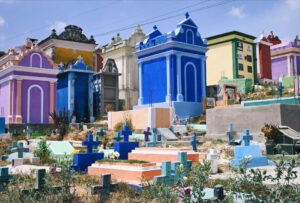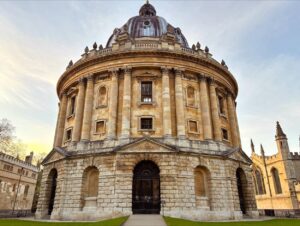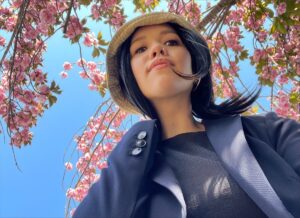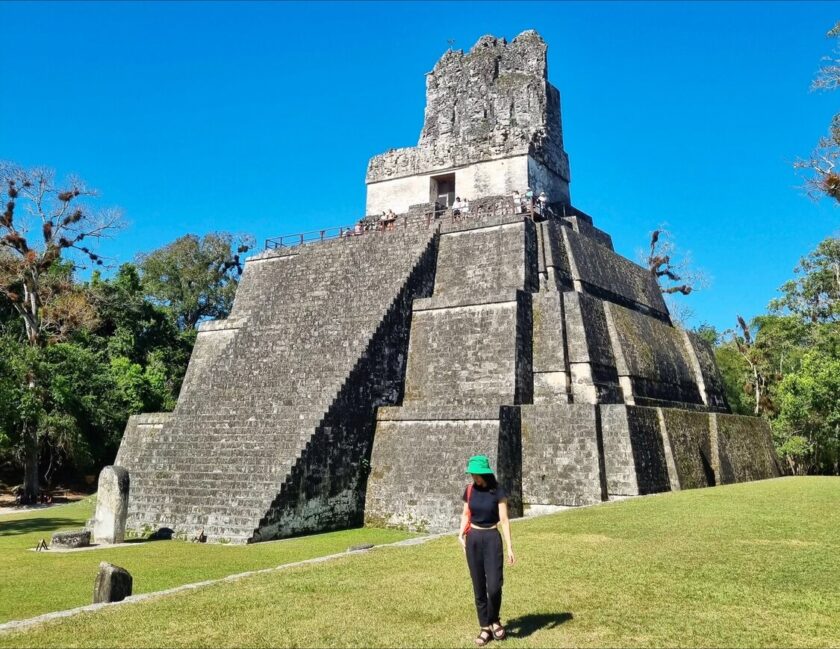
In the heart of the Guatemalan jungle, surrounded by lush vegetation, the ancient city of Tikal is one of the major archaeological sites of the Maya civilisation.
As I stood in the middle of the Great Plaza, rotating slowly around on my two feet, looking above at the complex pyramids and architectural structures, I was both mesmerised and baffled.
Tikal appeared as an aberration in the middle of the jungle. Words escaped me as I tried to get my head around the ingenuity of the Maya people.
How was this imposing city built using only basic tools and without the use of the wheel or working animals? And why was it abandoned?
The beauty of Tikal is that it creates more questions than it answers. A glimpse into the fascinating world of the ancient Maya has the power to change the way you think.
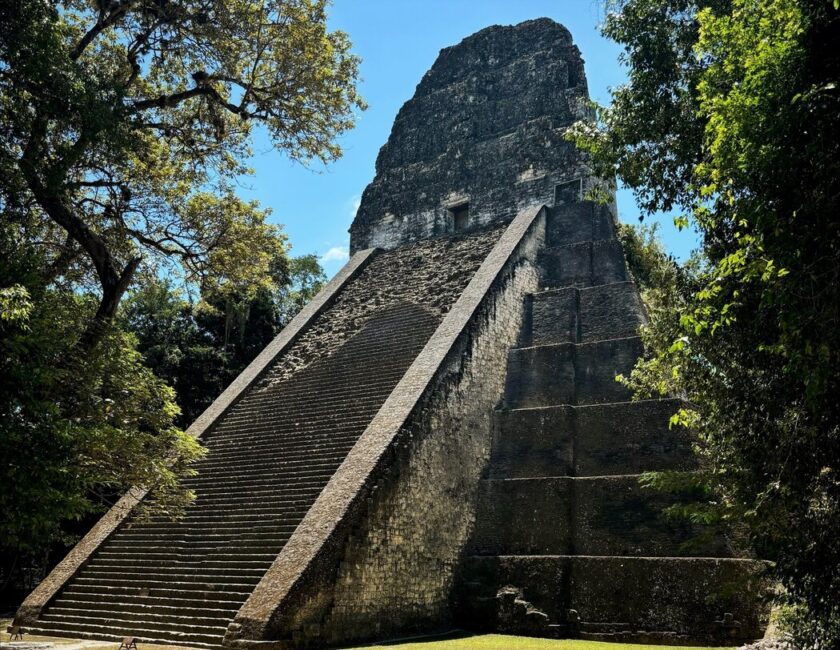
What makes visiting Tikal so special?
Tikal boasts some of the biggest and best Maya ruins in Central America. But what we see today only reveals a small fraction of the many thousand structures that lay buried underground.
The ruins of Tikal offer a bridge to the past. They hold secrets about the Maya civilisation that scientists have been trying to decode since its rediscovery in 1848. (I say rediscovery very loosely because local populations would have known about Tikal).
For thousands of years, the Maya made remarkable advances in art, architecture, mathematics, astronomy, agriculture, and the written language that far superseded advances in the Western world at the time.
Today, these subjects still play a central role in society as well as our understanding of life and our relationship to the universe. While the way we live might look completely different now, our search for meaning has not changed very much which tell us more about the human condition than most of us probably realise.
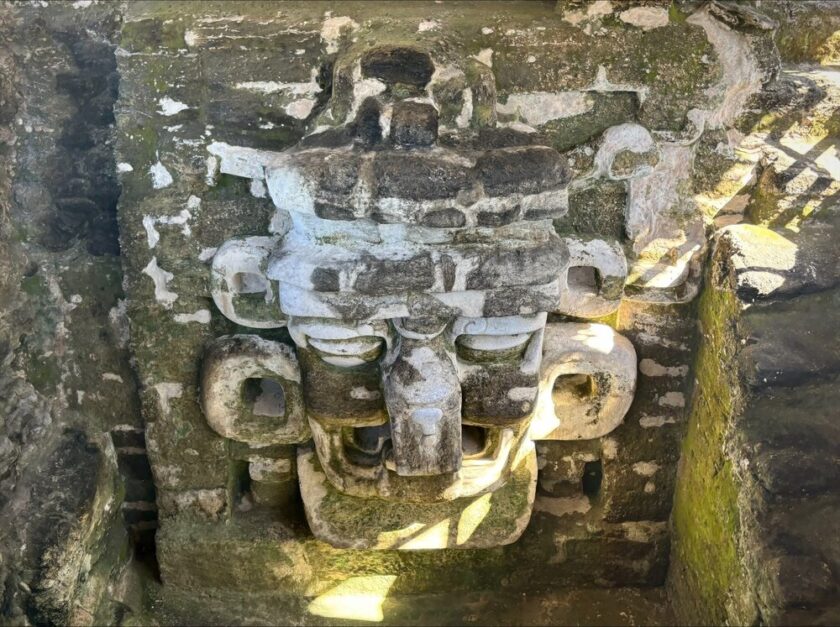
In its heyday during the 8th century AD, when trade and infrastructure flourished, Tikal was comparable to any of today’s major cities like London, Paris, New York or Shanghai.
One of the items that was said to have been heavily traded was cocao. That’s right, the confectionary we love around the world. What’s more, the Maya invented chocolate so we have a LOT to thank them for.
In rather gnarly reports, evidence reveals that cacao was also mixed with blood and consumed before human sacrifice.
Tikal travel guide
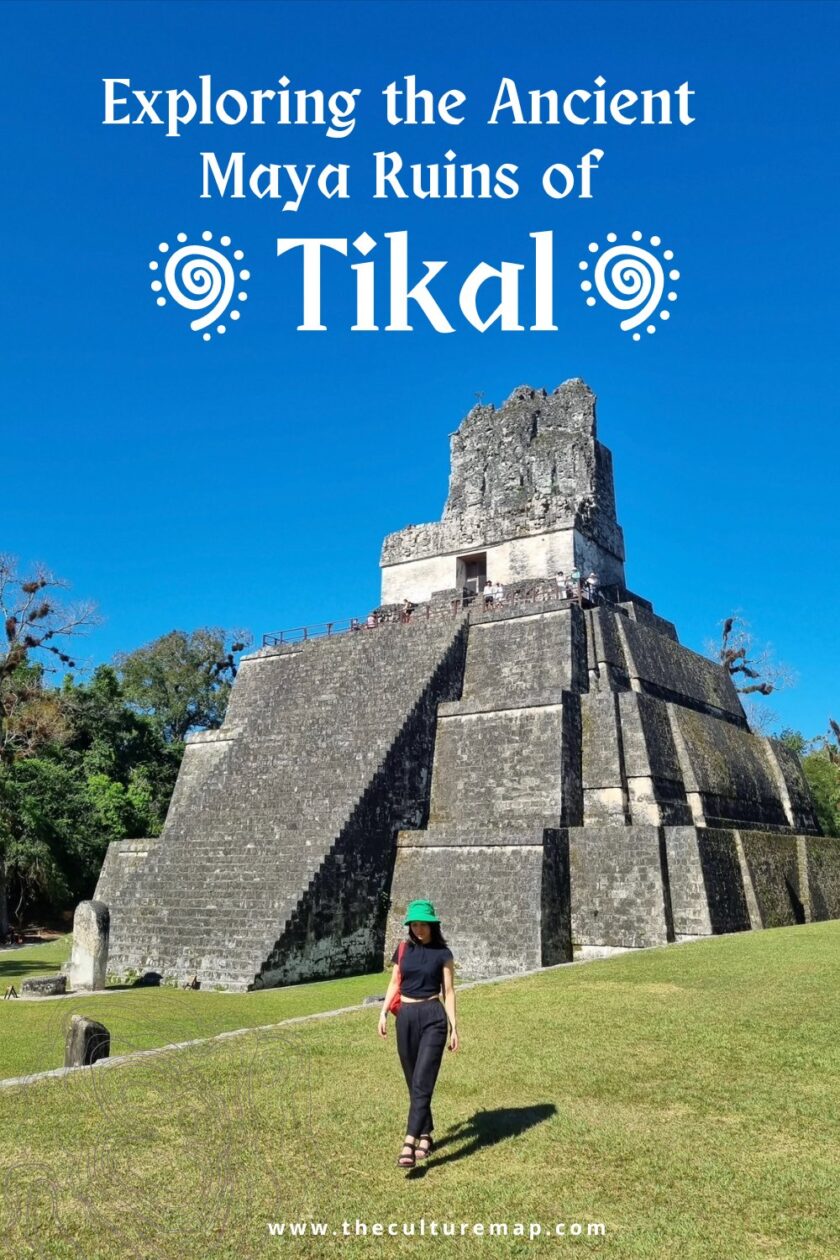
There are many show-stopping reasons to visit Guatemala (far more than I initially imagined), and the UNESCO World Heritage Site of Tikal is without doubt one of them.
While I loved exploring Tikal, there were a few things that I wish I’d known before visiting. Knowing these things would have enhanced my visit, so I’ve put together this travel guide to help answer any questions you might have before visiting for yourself.
Overview: facts & figures
- Location: Northern Guatemala, part of the 1 million hectare protected Maya Biosphere Reserve
- Claim to fame: Tikal is one of the largest archaeological sites in Central America and is encompassed by Tikal National Park.
- When: Tikal flourished between roughly 600 BC. and 900 AD.
- Peak population: Estimates vary wildly, but it’s likely that somewhere between 50,000 and 100,000 people lived in the the city at the height of its power.
- Collapse of Maya empire: Tikal and much of the Maya world collapsed around 900 AD.
- Declared a National Park: 1955
- Declared a UNESCO World Heritage Site: 1979
- Area: 575 sq. kilometres (222 sq. miles)
- Indigenous land: The land was originally home to the ancient Maya civilization. Tikal’s strategic location allowed it to establish strong connections with other significant Maya sites in different countries. The Maya developed a complex network of trade routes, and communication systems that linked Tikal to places such as Copan in present-day Honduras, Palenque and Chichen Itza in Mexico, and Caracol in Belize.
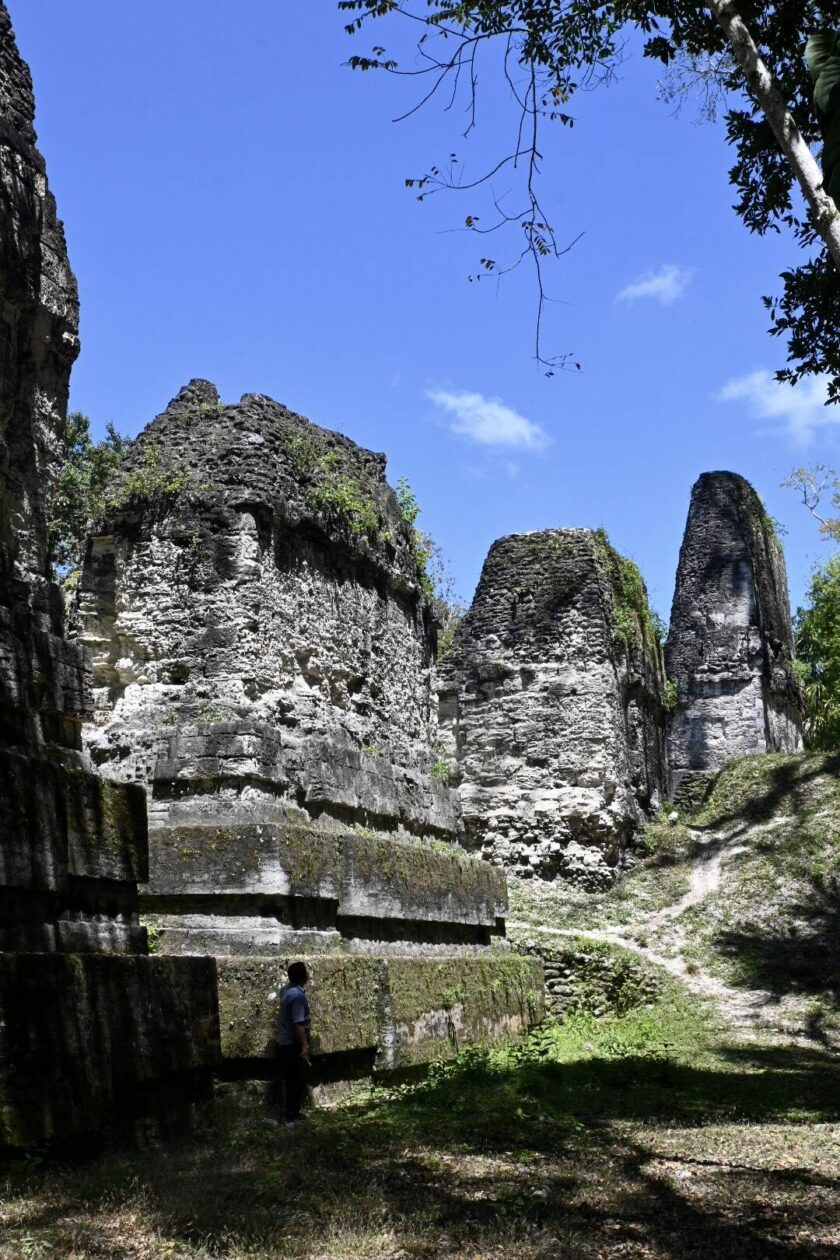
Why did Tikal collapse?
The decline of Maya civilisation and eventual abandonment of Tikal, and other connected ancient Maya cities, is a complex process that likely involved a combination of social, political, environmental, and economic factors rather than a single cause.
While the exact reasons for Tikal’s disappearance are still debated among archaeologists and historians, several theories have been proposed but a severe drought is thought to be the main cause.
Periods of prolonged drought may have severely impacted agricultural productivity, leading to food shortages, social unrest and illness.
In a rather tragic twist of fate, instead of adapting, the Maya are said to have doubled-downed on their beliefs by praying to the Maya god of rain which put the nail in the coffin so to speak.
The Maya people themselves are not gone, their decedents lives on in Yucatán Peninsula and across Central America. Their great temples and cities like Tikal, were left to be reclaimed by the rainforest.
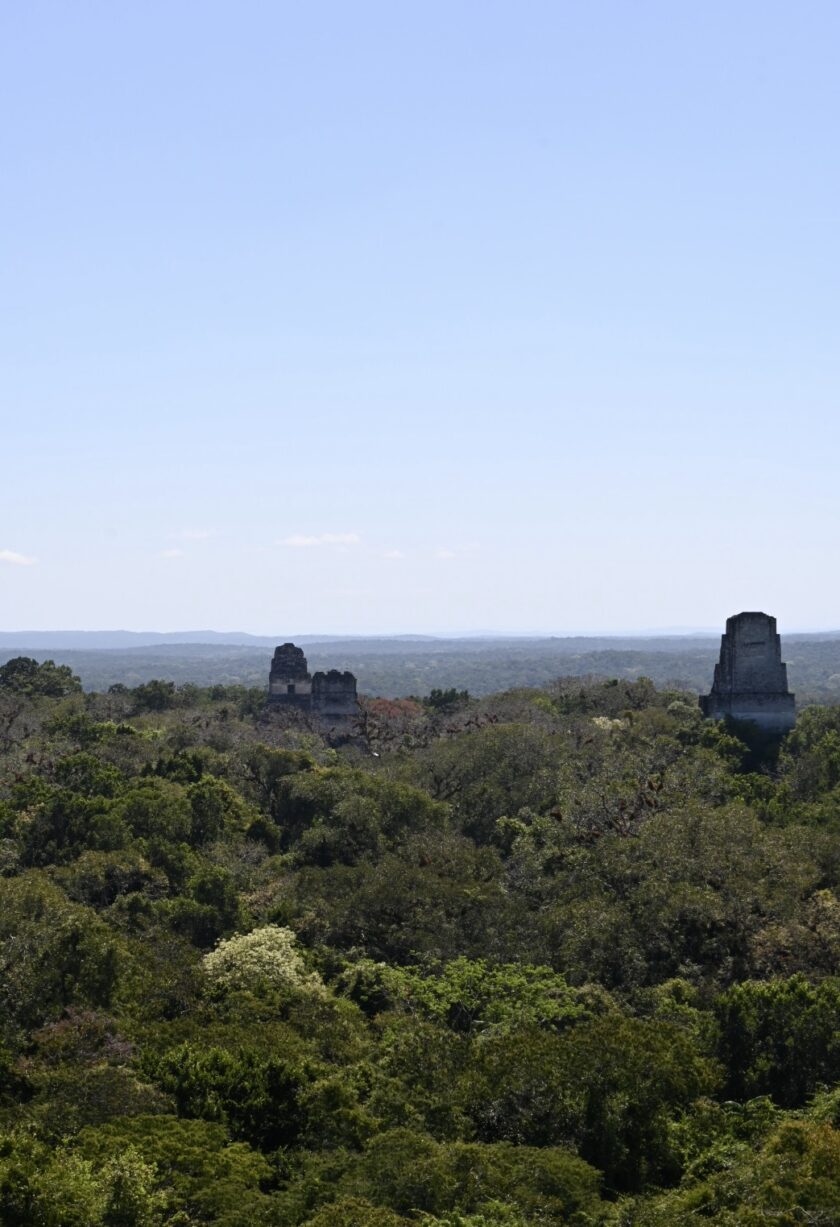
Nowadays, much of Tikal is still hidden by dense rainforest, with only about 10% of the former city being excavated. Gone are the Mayas from Tikal, and instead it is the abode of native animals prowling the jungle and the prying eyes of curious tourists.
It’s quite surreal when you wander around Tikal and see how all the mounds surrounding you are just more pyramids and structures entirely enveloped by nature. There’s still so much waiting to be discovered. What we see out in the open – the Great Plaza and a handful of awe-inspiring pyramids is just a small percentage compared to what lies beneath the undergrowth. Crazy!
Can you climb the temple steps?
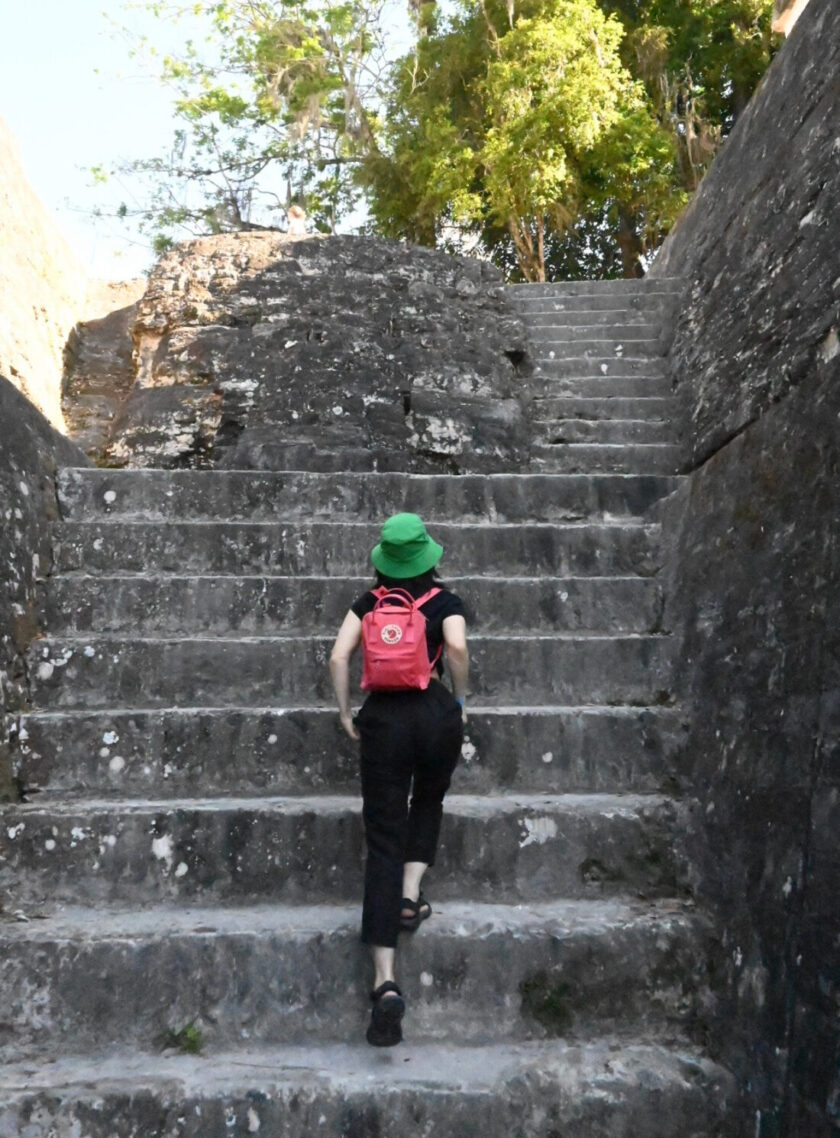
Adding to the fun and adventure of exploring Tikal is that visitors can climb up most of the Maya Temples. If the setting of Indiana Jones were real-life place, Tikal would be it.
Climbing the monuments might seem like a tall task under the hot Guatemalan sun, but it’s worth it. The panoramas of towering pyramids emerging from the greenery is a breath-taking vision.
Temples & structures to see in Tikal
At the centre of Tikal lies the Great Plaza (sometimes referred to as the Grand Plaza or Central Plaza) flanked by two large temple pyramids on either side.
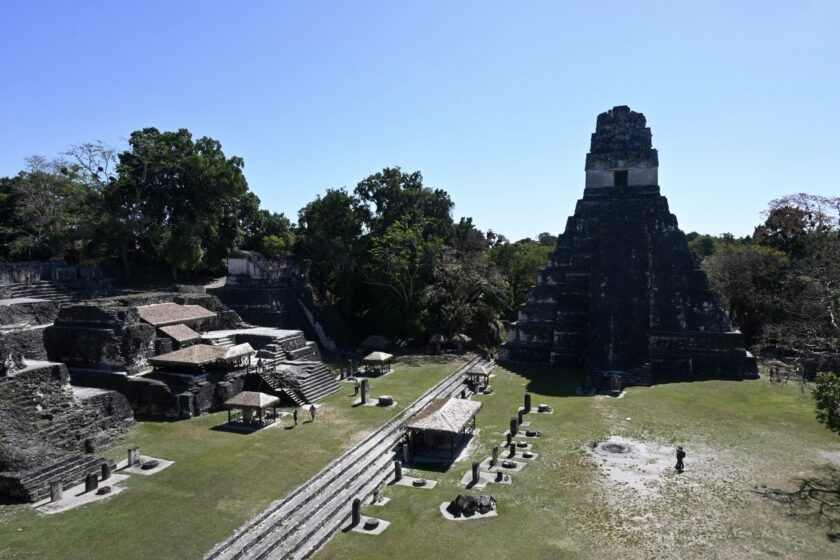
It made me think of all the great plazas or main squares around the world, and how they all serve as main meeting points for social life.
This Plaza is definitely among the the finest I’ve ever seen. I can only imagine how incredible it must have been during its glory days.
To the north of the Great Plaza is the North Acropolis said to be used for funerary activity, and to the south is the Central Acropolis that holds a striking maze of seven internal patios.
There are 5 major temples spread throughout the site as well as a number of notable areas.
The highlights
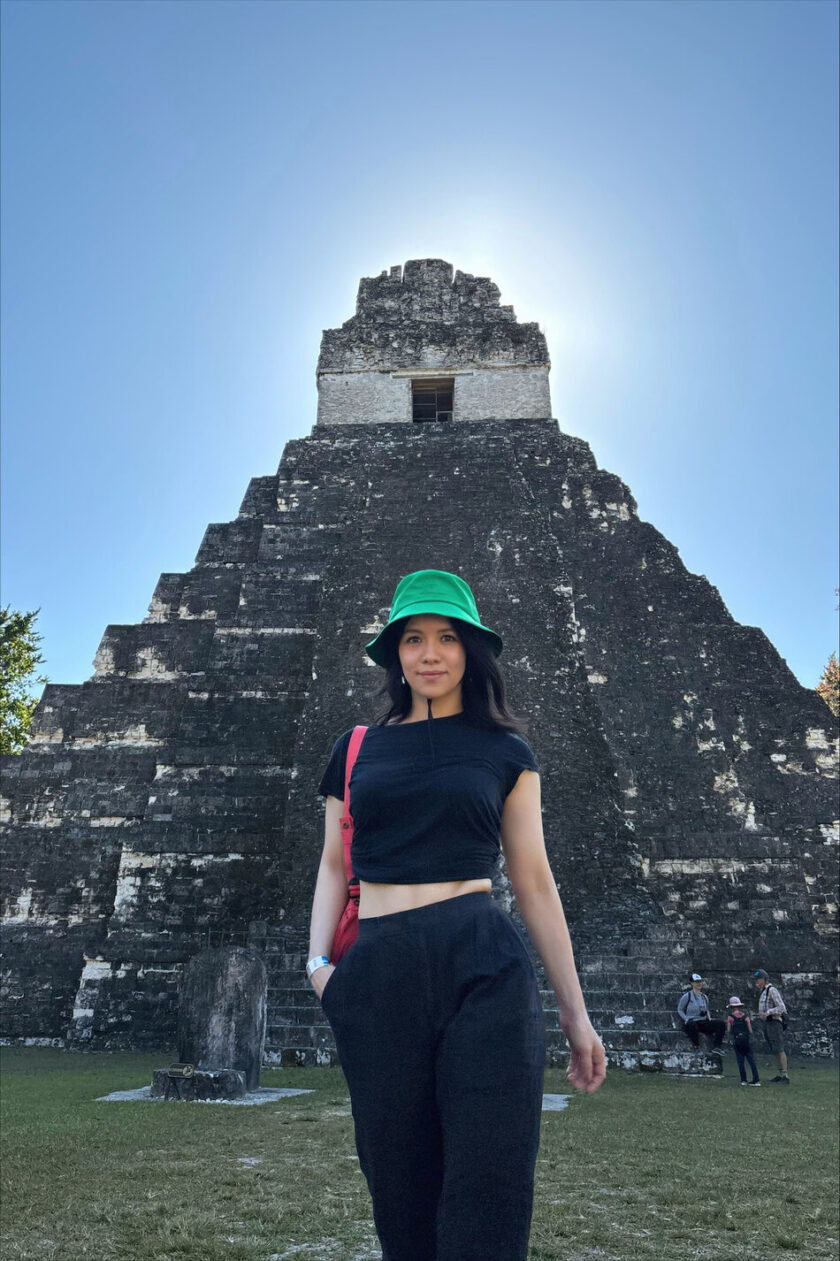
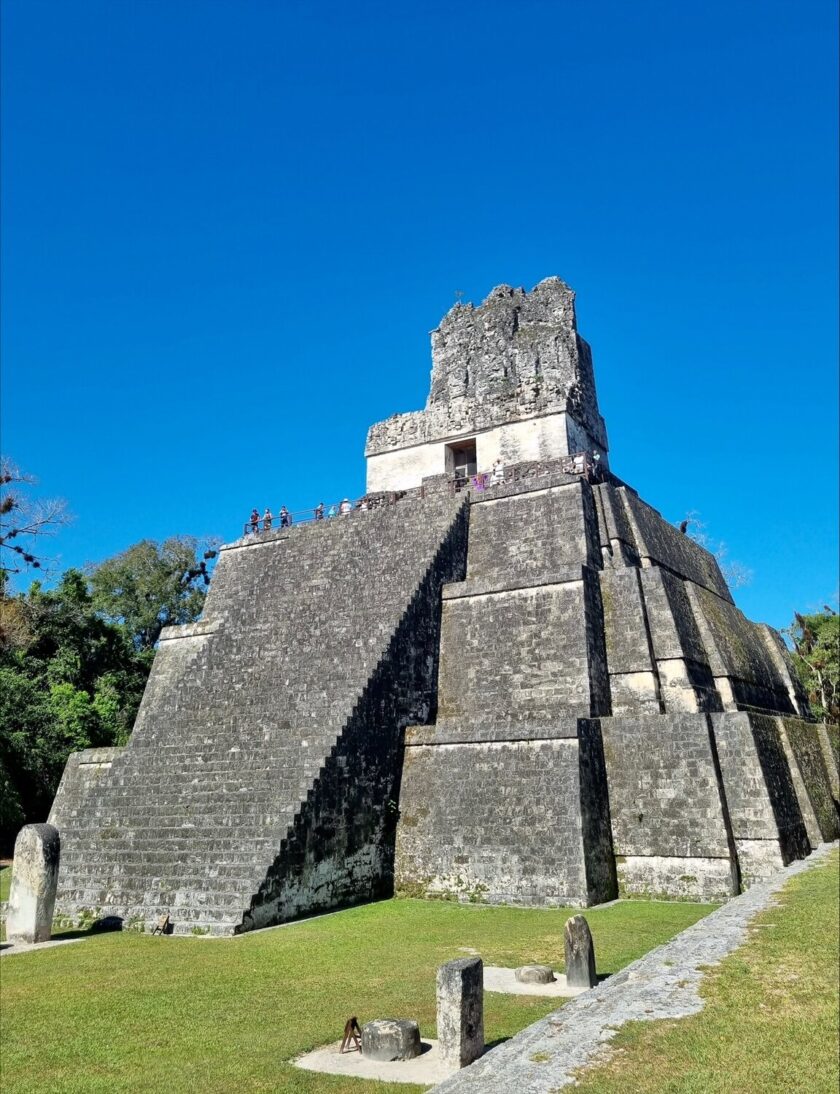
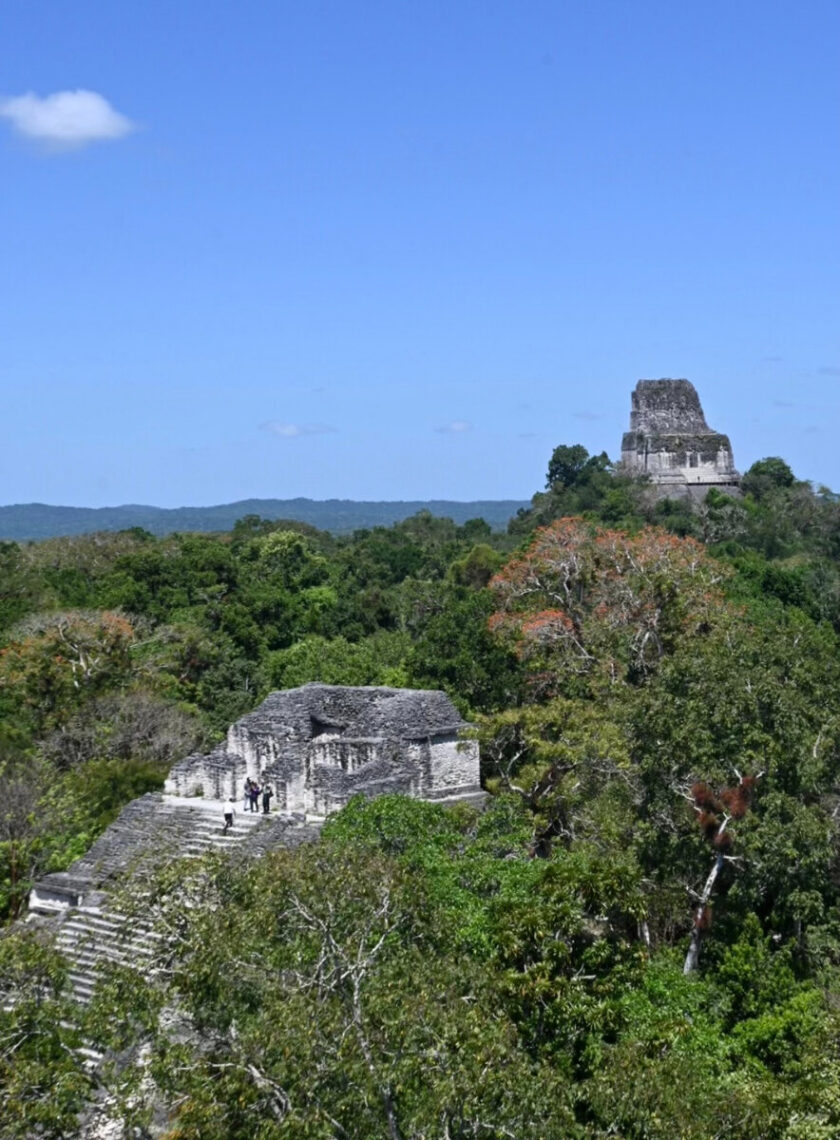
Fun fact: Once you negotiate the 180+ stairs you’ll be greeted by the iconic view that impressed George Lucas enough to put in Star Wars, Episode IV: A New Hope.
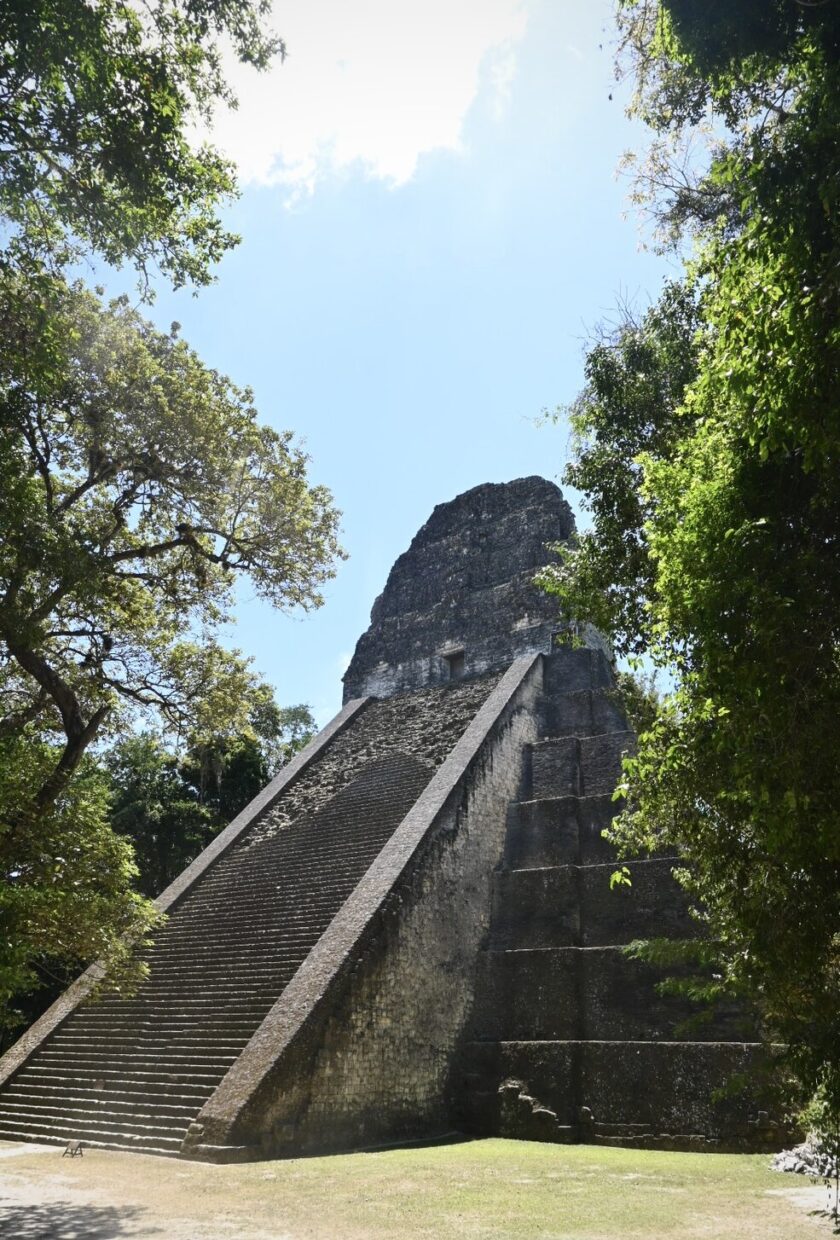
Biodiversity at Tikal
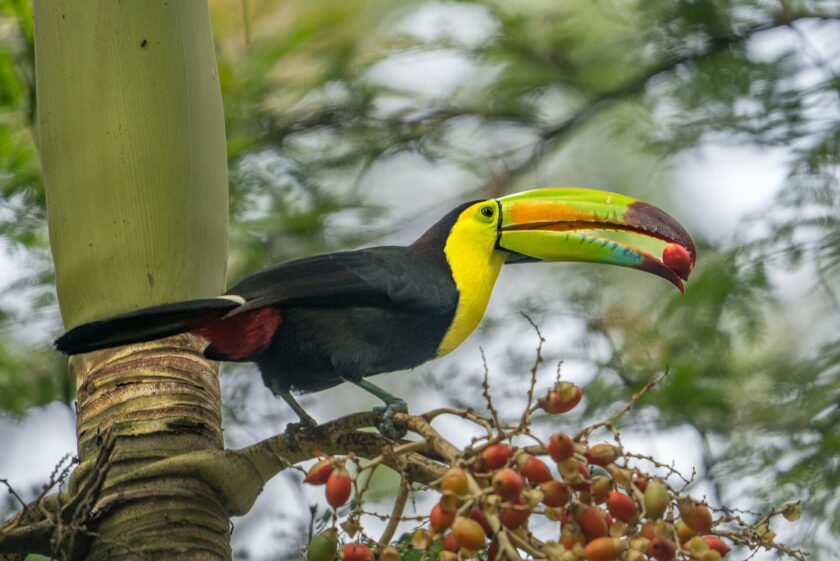
Tikal National Park not only preserves the architectural marvels of the Maya but also showcases the vibrant biodiversity of the surrounding jungle.
You will likely spot howler monkeys, toucans and the adorable coatis, and if you’re lucky, jaguars, though sightings are not generally common.
I was thrilled to spot a toucan in the wild. I was both mermerised and amused by how much their beaks looked like straight up bananas!
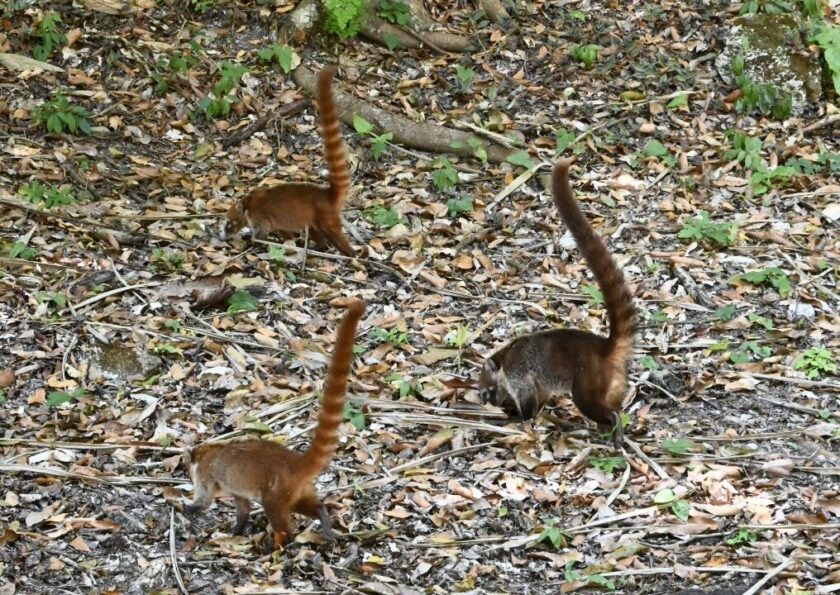
Perhaps bringing me the most joy were the coatis, an animal I wasn’t even familiar with before setting my eyes on their long, slender tails, protruding upwards with the uncanny straightness of a ruler. They appeared just as curious to see me, as I was to see them.
Should you visit Tikal independently or with a guided tour?
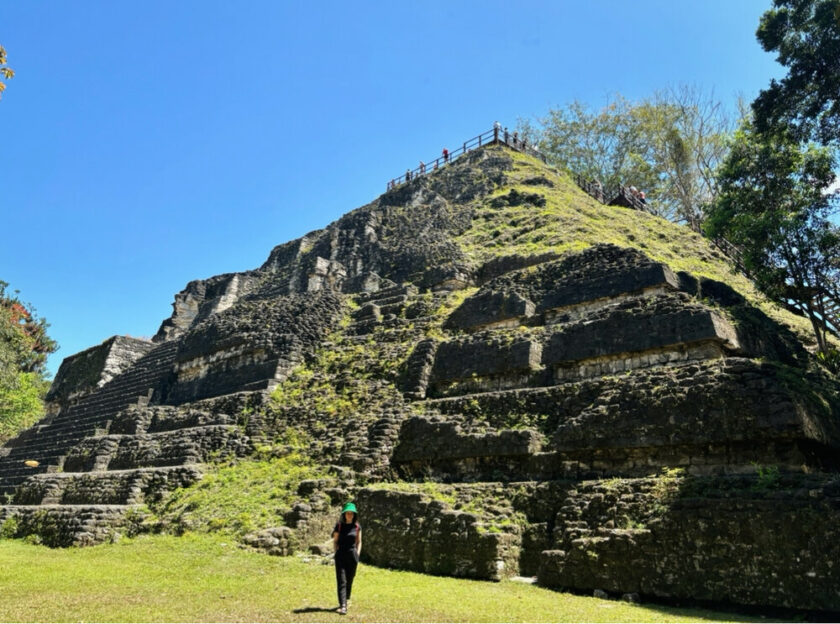
It is totally possible to visit Tikal independently, however I had a pre-booked day at Tikal. I recommend arriving at the park early. It’s still cool in the morning so it’s better to start early and finish early in the afternoon before the heat begins to sap the energy out of you.
As time was pretty limited for me, I found this was the best way to cover the site and learn of its historical importance and the significance of Maya civilisation.
I definitely recommend doing a tour despite the fact that I was a bit disappointed with my tour. The group size was larger than I would have preferred and the guide seemed to lack basic historical knowledge.
Maybe my guide was tired, or just having an ‘off day’ but his passion really didn’t shine through. In the end I ending up wandering off so I could let my imagination roam free. I simply kept an eye on the group so I could join them at the end to catch my bus back to Flores.
If I ever visited Tikal again, I would look for a small-group tour with a guide that really knows their history. I’m not suggesting you go all out and find yourself an archeologist, but rather find someone who is truly passionate about the rich history of Tikal. Such a guide will truly bring this incredible place alive!
After some research, I’ve selected two small-group tours which both have an emphasis on archeology and wildlife. I think either of these would really enhance your experience of visiting Tikal.
An underrated wonder of the world?
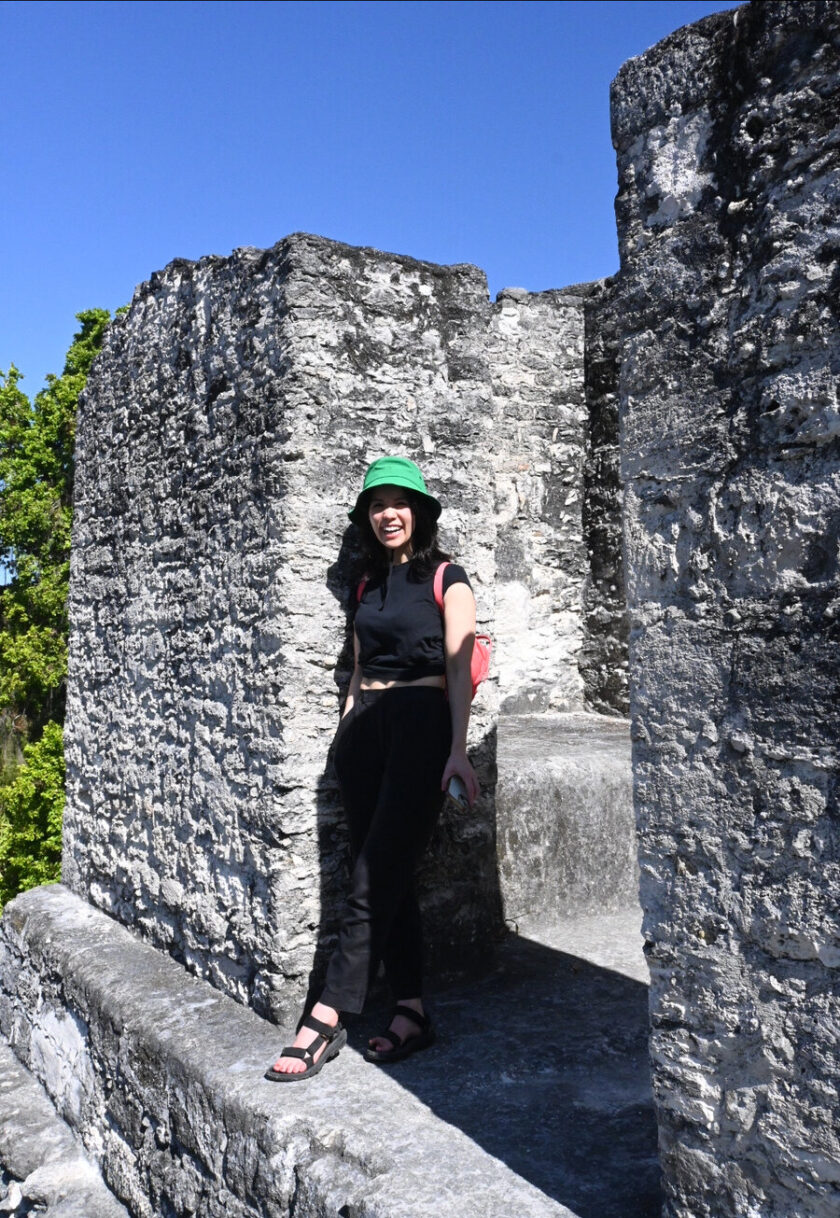
Today, Tikal is perhaps less known and less celebrated than Palenque, Copán or Chichen Itza, in part due to its more remote setting and relative difficultly of getting there. Fortunately, Tikal’s remoteness means fewer crowds, which only serves to add to the wonder and allure of exploring Tikal.
I’ve personally not been to Chichen Itza, the world’s most famous Mayan site being hailed one of the New 7 Wonders of the World. I have, however, heard that mass tourism sadly detracts away from the enjoyment of visiting.
When I’ve spoken to people who have visited both Chichen Itza and Tikal, most people say they enjoyed visiting Tikal more which is revealing. When things start getting too popular, sometimes visiting becomes more about ticketing it off the ‘bucket list’ than actually experiencing it, which quite frankly is rather sad.
Also, if reaching Chichen Itza was already easy enough, only a few months ago in December 2023, a new ‘Maya train’ was unveiled that connects beach resorts to archeological sites including the aforementioned, tearing up land largely used by indigenous groups in the process. Indeed, the irony of naming it the ‘Maya train’ seems to be lost on those who created it in the name of tourism. Maybe I’m being too cynical, I’m not sure?
In the meanwhile, as long as Tikal remains a little harder to reach, it will be a rewarding place to visit for sure.
Final thoughts about visiting Tikal
My visit to Tikal got me thinking about how the Maya created such a developed civilisation while working with Mother Nature, and not against her.
The Maya practiced animism, which is the belief that all things, from stones and trees to animals and humans, has a soul or spiritual essence.
Reflecting on how the Maya people lived has nudged me to think more about how I engage with the things and people around me more deeply.
I think being mindful of the principles of animism seems like a positive place to start.
Are you planning a trip to Tikal and Guatemala?
Extra info
Where to stay: I stayed near Flores which is the main base for travellers making their way to Tikal. Search and compare accommodation in Flores via booking.com.
It takes about an hour and a half to get from Flores to Tikal. However, getting to Flores can be trickier depending on where you are prior. Tourist shuttles to Flores are frequent and leave from all major towns in Guatemala.
There’s also an airport in Flores so you have the option to fly. It is usually more expensive, but you can find some affordable flights if you book in advance. I recommend using Skyscanner to purchase tickets and find the best flight times and prices.


